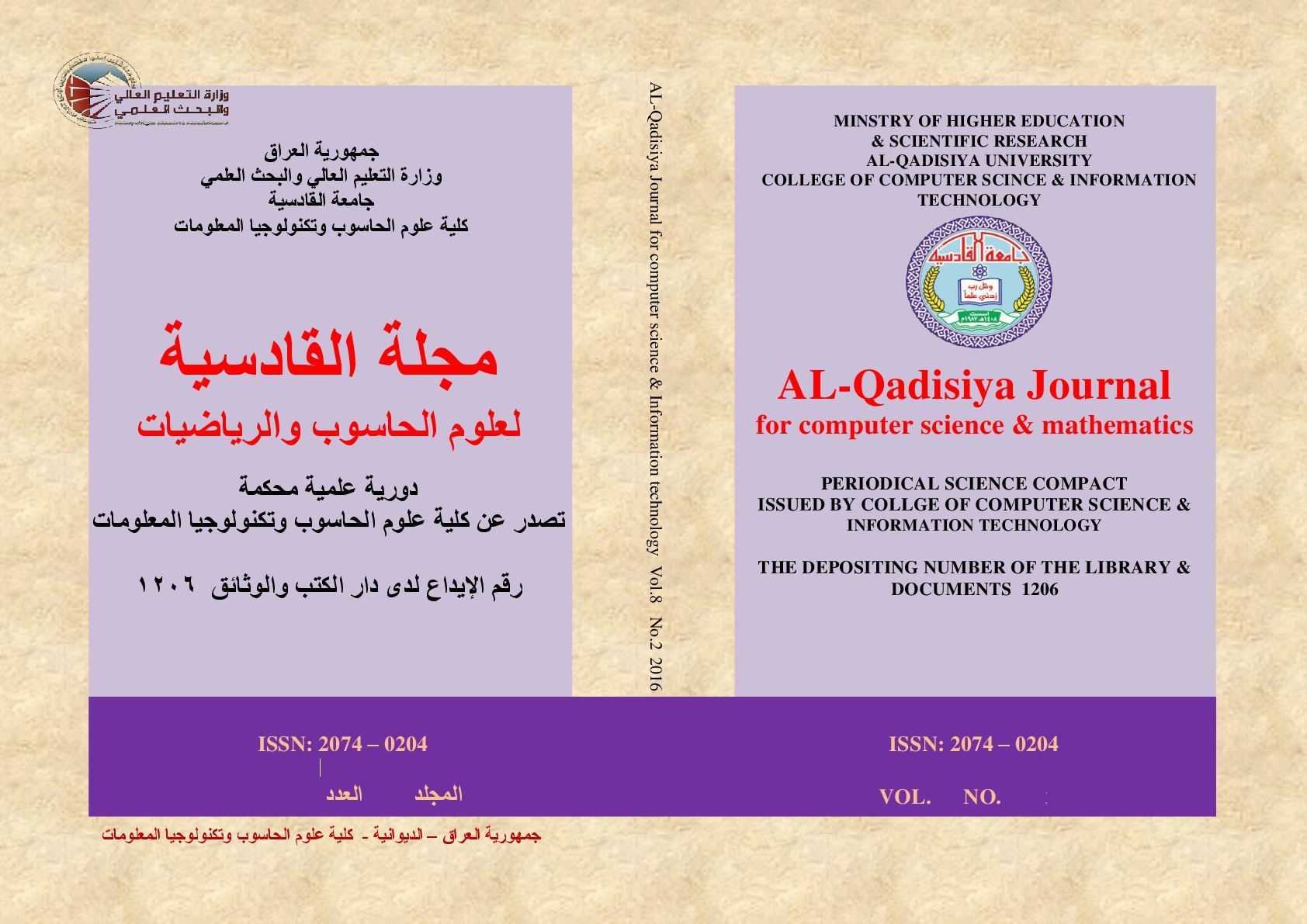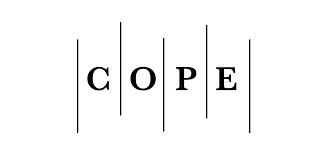A Survey for Lie Detection Methodology Using EEG Signal Processing
DOI:
https://doi.org/10.29304/jqcm.2022.14.1.903Keywords:
Electroencephalography EEG, , Lie detection, Feature Extraction, ClassificationAbstract
Electroencephalography (EEG) is a hot topic all around the world. EEG signals, a series of measurements taken using electrodes on the scalp, can indicate brain activity. They are more private, sensitive, and difficult to steal and recreate. EEG data are increasingly commonly employed in diagnosing brain illnesses and the field of Brain-Computer interfaces thanks to advancements in biomedical signal processing techniques (BCI). BCI is a brain-computer interface that uses electrical impulses from the brain to communicate. EEG signals are used to interpret the electrical activity of the brain. The electrical activity of the brain is read using EEG signals. Many studies are being conducted in many fields to benefit from this technology. Studying EEG gives a solid understanding of how brain signals function in various moods and activities. Lie detection is a new technology that is being used to combat crime. Traditionally, this has been accomplished by language analysis, face and body movement recognition, training observation, and voice stress analysis. EEG analysis provides a better understanding of brain activity thanks to advances in cognitive science and neuroscience. Deception identification has become a severe issue as crime has increased. Previous surveys have discussed numerous approaches supported with experimental outcomes and compared them. This paper addressed each direction and offered different sets of characteristics and electrodes, EEG signal preprocessing, feature extraction, feature selection, and classification. Also, it discusses many methods which may need some adjustments at each phase of brain signal processing for lie detection.
Downloads
References
[2] R. Jenke, A. Peer, and M. Buss, “Feature extraction and selection for emotion recognition from EEG,” IEEE Trans. Affect. Comput., vol. 5, no. 3, pp. 327–339, 2014, doi: 10.1109/TAFFC.2014.2339834.
[3] B. M. R. and H. K, “Classification Performance Analysis Of Combined Fnrs-Polygraph System Using Different Temporal Windows.”
[4] S. Amir, N. Ahmed, and B. S. Chowdhry, “Lie Detection in Interrogations Using Digital Signal Processing of Brain Waves.”
[5] B. H. Cho et al., “Attention enhancement system using virtual reality and EEG biofeedback,” in Proceedings of the IEEE Virtual Reality 2002, vol. VR02, pp. 156–163.
[6] E. Saxby and E. G. Peniston, “Alpha-theta brainwave neurofeedback training: An erective treatment for male and female alcoholics with depressive symptoms,” J. Clin. Psychol., vol. 51, 5.
[7] “1st Annushree Bablani, 2nd Damodar Reddy Edla and 3rdVenkatanareshbabu Kuppili,” in Deceit Identification Test on EEG Data using Deep Belief Network.2018.9th Dept. of CSE, NIT Goa, India.
[8] A. Bablani, D. R. Edla, V. Kupilli, and R. Dharavath, “Lie Detection Using Fuzzy Ensemble Approach with Novel Defuzzification Method for Classification of EEG Signals,” IEEE Trans. Instrum. Meas., vol. 70, 2021, doi: 10.1109/TIM.2021.3082985.
[9] AbdulhamitSubasi and I. M. Gursoy, “Signal Classification Using PCA, ICA, LDA and Support Vector Machines,” in Elsevier Transactions on Expert Systems with applications Vol.37pp.8659-8666, .
[10] M. Daneshi Kohan, A. Motie NasrAbadi, A. sharifi, and M. Bagher Shamsollahi, “Interview based connectivity analysis of EEG in order to detect deception,” Med. Hypotheses, vol. 136, p. 109517, 2020, doi: 10.1016/j.mehy.2019.109517.
[11] C. A. M. Lima, A. L. V Coelho, and M. Eisencraft, “Tackling EEG Signal Classification with Least Squares Support Vector Machines: A Sensitivity Analysis Study’,” Elsevier Trans. Comput. Biol. Med., vol. 40, pp. 705–714.
[12] M. Daneshi Kohan, A. Motie NasrAbadi, A. sharifi, and M. Bagher Shamsollahi, “Interview based connectivity analysis of EEG in order to detect deception,” Med. Hypotheses, 2020, doi: 10.1016/j.mehy.2019.109517.
[13] V. Abootalebi, M. H. Moradi, and M. A. Khalilzadeh, “A new approach for EEG feature extraction in P300-based lie detection,” Comput. Methods Programs Biomed., vol. 94, no. 1, pp. 48–57, Apr. 2009, doi: 10.1016/j.cmpb.2008.10.001.
[14] A. Arya1, “Dinesh Bhatia2, Mohammed Abdelghani3: LIE DETECTION USING ELECTROMYOGRAPHY AND ELECTROENCEPHALOGRAPHY.” .
[15] J. Gao, “Data from A novel algorithm to enhance P300 in single trials: application to lie detection using F-score and SVM, Dataset.” .
[16] A. I. Simbolon, A. Turnip, J. Hutahaean, Y. Siagian, and N. Irawati, “An Experiment of Lie Detection based EEG-P300 Classified by SVM Algorithm.”
[17] S. Kamran Haider, M. I. Daud, A. Jiang, and Z. Khan, “Evaluation of P300 based Lie Detection Algorithm,” Electr. Electron. Eng., vol. 2017, no. 3, pp. 69–76, 2017, doi: 10.5923/j.eee.20170703.01.
[18] A. Turnip, M. F. Amri, M. A. Suhendra, and D. E. Kusumandari, “Lie detection based EEG-P300 signal classified by ANFIS method,” J. Telecommun. Electron. Comput. Eng., vol. 9, no. 1–5, pp. 107–110, 2017.
[19] A. Bablani, D. Reddy Edla, and V. Kuppili, “Deceit Identification Test on EEG Data using Deep Belief Network.”
[20] S. Anwar, T. Batool, and M. Majid, “Event Related Potential (ERP) based Lie Detection using a Wearable EEG headset,” Proc. 2019 16th Int. Bhurban Conf. Appl. Sci. Technol. IBCAST 2019, pp. 543–547, 2019, doi: 10.1109/IBCAST.2019.8667131.
[21] “Navjot Saini1 • Saurabh Bhardwaj1 • Ravinder Agarwal1. Classification of EEG signals using a hybrid combination of features for lie detection.” .
[22] Y. Kulasinghe and D. H. Yohan Kulasinghe, “Using EEG and Machine Learning to perform Lie Detection Kinect sensor for skeleton abnormality detection View project Software Effort Estimation Model Based on Story Points for Agile Development View project Using EEG and Machine Learning to perform Lie D.” [Online]. Available: https://www.researchgate.net/publication/335095404.
[23] S. Dodia, D. R. Edla, A. Bablani, and R. Cheruku, “Lie detection using extreme learning machine: A concealed information test based on short-time Fourier transform and binary bat optimization using a novel fitness function,” Comput. Intell., vol. 36, no. 2, pp. 637–658, 2020, doi: 10.1111/coin.12256.
[24] Y. Xiong, L. Gu, and J. Gao, “Phase synchrony and its application to lie detection,” Proc. 2020 IEEE Int. Conf. Power, Intell. Comput. Syst. ICPICS 2020, pp. 726–729, 2020, doi: 10.1109/ICPICS50287.2020.9202282.
[25] N. Baghel, D. Singh, M. K. Dutta, R. Burget†, and V. Myska†, Truth Identification from EEG Signal by using Convolution neural network: Lie Detection.2020 18th Centre for Advanced Studies, Dr. Lucknow, India: A.P.J. Abdul Kalam Technical University.
[26] H. Gehring and A. Bortfeldt, “A Parallel Genetic Algorithm for Solving the Container Loading Problem,” Int. Trans. Oper. Res., vol. 9, no. 4, pp. 497–511, 2002, doi: 10.1111/1475-3995.00369.
[27] M. Senthilmurugan, M. Latha, and N. Malmurugan, “Classification in EEG-based brain computer interfaces using inverse model,” Int. J. Comput. Theory Eng., vol. 3, no. 2, p. 274, 2011.
[28] R. Amini and S. C. Ng, “Comparison of Artificial Neural Network, Fuzzy Logic and Adaptive Neuro-Fuzzy Inference System on Air Pollution Prediction,” J. Eng. Technol. Adv., vol. 2, no. 1, pp. 14–22, 2017, doi: 10.35934/segi.v2i1.14.
[29] H. Shao, H. Jiang, H. Zhang, W. Duan, T. Liang, and S. Wu, “Rolling bearing fault feature learning using improved convolutional deep belief network with compressed sensing,” Mech. Syst. Signal Process., vol. 100, pp. 743–765, 2018, doi: 10.1016/j.ymssp.2017.08.002.
[30] D. Han, Q. Liu, and W. Fan, “A new image classification method using CNN transfer learning and web data augmentation,” Expert Syst. Appl., vol. 95, pp. 43–56, 2018, doi: 10.1016/j.eswa.2017.11.028.
[31] H. Cho, M. Ahn, and A. S. al, “Supporting data for “EEG datasets for motor imagery brain-computer interface,” GigaScience Database, doi: 10.5524/100295.













